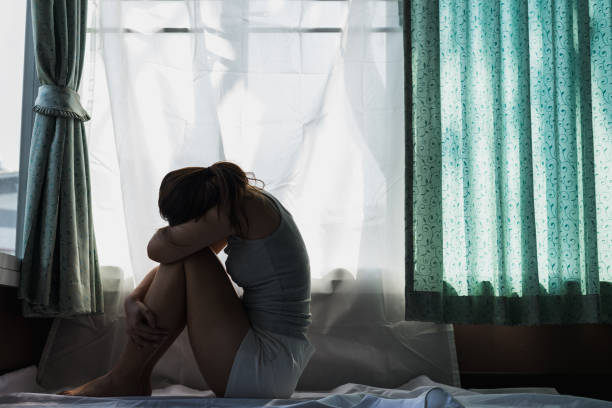It often begins with a moment that makes the heart race—a condom breaks, a pill is missed, or sex happens when it wasn’t planned. In the hours that follow, a cloud of worry can descend. Questions race through the mind: What now? Is it too late? What can I do to prevent an unintended pregnancy?
For many people in this situation, the answer lies in something called emergency contraception—more commonly known as the “morning-after pill.” Despite its nickname, it isn’t just for the morning after, and it isn’t the same as abortion. Yet myths, misunderstandings, and misinformation swirl around it, leaving people unsure of what it really is and how it works.
Understanding the morning-after pill isn’t just about science—it’s about empowerment. It’s about making informed decisions in moments when clarity feels hard to grasp.
What Emergency Contraception Actually Is
Emergency contraception is a way to reduce the risk of pregnancy after unprotected sex or contraceptive failure. It is not meant to replace regular birth control but to serve as a backup method. The most common form is the oral “morning-after pill,” which comes in two main types, both designed to interfere with the processes that lead to pregnancy.
Its primary role is prevention—prevention of ovulation, prevention of fertilization, and in some cases, prevention of implantation. What it does not do is terminate an existing pregnancy. This distinction is not only important medically, but also emotionally, because many people confuse emergency contraception with abortion pills.
The Science Behind the Pill
The most widely available morning-after pills contain either levonorgestrel or ulipristal acetate. Both are synthetic hormones, but they work in slightly different ways.
Levonorgestrel, often sold under brand names like Plan B One-Step, is a progestin. If taken before ovulation, it can delay or stop the release of an egg from the ovary. No egg means no chance for sperm to meet it, and therefore no pregnancy. It is less effective if ovulation has already occurred, which is why timing is critical.
Ulipristal acetate, found in a brand called Ella, is a selective progesterone receptor modulator. It can delay ovulation even when you are closer to it, making it more effective in the narrow window before egg release.
Both types work best the sooner they are taken after unprotected sex, ideally within the first 24 hours. Levonorgestrel can be taken up to 72 hours later, and ulipristal acetate can be effective up to 120 hours after. But with every passing hour, the effectiveness declines.
Why Timing Matters So Much
To understand why timing is so crucial, we have to think about the biology of reproduction. Sperm can survive in the female reproductive tract for up to five days, patiently waiting for an egg to be released. Ovulation is the moment the egg emerges from the ovary, ready for fertilization. If the morning-after pill is taken before ovulation, it can delay that release until the sperm are no longer viable.
If ovulation has already happened, however, the pill’s ability to prevent pregnancy is greatly reduced. That’s why understanding your menstrual cycle—and acting quickly—is essential.
Debunking the Abortion Myth
One of the most persistent misconceptions about the morning-after pill is that it causes an abortion. This is false. Abortion ends an existing pregnancy, which is defined medically as the implantation of a fertilized egg in the lining of the uterus. The morning-after pill works before that point, preventing ovulation or fertilization. If implantation has already occurred, emergency contraception will not be effective.
This difference matters because it shapes how people view and use emergency contraception. It also influences laws and regulations in some countries. For those who oppose abortion for moral or religious reasons, understanding that the morning-after pill is not an abortifacient can be an important distinction.
The Emotional Side of Emergency Contraception
Beyond the science, there is a deeply human aspect to using the morning-after pill. People often take it in moments of fear, anxiety, or uncertainty. For some, it is a relief—a second chance to prevent an unintended pregnancy. For others, it may bring up feelings of shame, guilt, or self-judgment, often because of cultural stigma.
These emotions are shaped by personal beliefs, societal attitudes, and sometimes misinformation. In reality, choosing to use emergency contraception is a responsible act of self-care. It is a decision that reflects awareness of one’s body and future.
How It Feels to Take the Morning-After Pill
Taking the pill is usually straightforward: a single tablet with a glass of water. But the experience doesn’t end there. Some people may notice side effects like nausea, fatigue, dizziness, breast tenderness, or changes in their next period. These effects are generally short-lived and not harmful.
Menstrual changes are common. The next period may arrive earlier or later than expected, and the flow may be heavier or lighter. These changes are temporary and do not signal long-term fertility problems.
Access and Barriers
In many countries, levonorgestrel-based emergency contraception is available without a prescription, sometimes even over the counter. Ulipristal acetate often requires a prescription, depending on local laws. Cost can range widely—from affordable generics to more expensive brand-name pills.
Barriers to access still exist. In rural areas, pharmacies may not stock it. In conservative regions, stigma or misinformation may prevent healthcare providers from offering it. In some places, legal restrictions limit its availability entirely. These barriers can turn what should be a quick, straightforward decision into a stressful challenge.
Myths and Misunderstandings
Some believe that repeated use of the morning-after pill can cause infertility. This is not supported by scientific evidence. While it is less effective than regular contraception and not intended for frequent use, it does not cause permanent harm to the reproductive system.
Others think it works no matter when it’s taken in the cycle. In reality, its success depends heavily on timing relative to ovulation. Still others confuse it with the abortion pill (mifepristone), which works very differently and is only used to end an existing pregnancy.
Emergency Contraception and Weight
Research suggests that body weight may affect how well levonorgestrel works, with reduced effectiveness in people over a certain weight or BMI. Ulipristal acetate may be less affected by this, making it a better choice for some individuals. This factor highlights the importance of having different emergency contraception options available.
Emergency Contraception Beyond the Pill
While this article focuses on the morning-after pill, it’s worth noting that the most effective form of emergency contraception is actually a copper intrauterine device (IUD) inserted by a healthcare provider. If placed within five days after unprotected sex, it can prevent pregnancy with over 99% effectiveness. However, this method requires medical access and is not always available in urgent situations.
Why Conversations Matter
Talking openly about emergency contraception helps dismantle stigma and spread accurate information. When people know the facts—how it works, when to use it, where to get it—they are better equipped to make choices that align with their needs and values.
For parents, educators, and healthcare providers, creating safe spaces for these conversations can change lives. For individuals, learning about emergency contraception before an emergency happens can turn a panicked situation into a manageable one.
The Bigger Picture of Reproductive Autonomy
Emergency contraception is just one piece of the broader landscape of reproductive health. It reflects the idea that people deserve the tools to control their own fertility, to decide if and when they want to become parents.
In a world where unintended pregnancies can alter the course of lives, education and access to emergency contraception are vital. The morning-after pill is not a perfect solution—it works best when used quickly, and it cannot replace consistent contraception—but it is a safety net that can make a profound difference.
Closing Thoughts: From Fear to Empowerment
The moments after unprotected sex can feel overwhelming, but they do not have to be paralyzing. The morning-after pill offers a chance to act, to take control, to move from fear toward empowerment.
It is a tool born from science, but its power lies in the human ability to make informed choices. To use it is to say: I value my future, I value my body, and I am willing to take steps to protect both.
The more we understand it, the more clearly we can see it for what it is—not a symbol of recklessness or moral failing, but a testament to the progress of medicine and the dignity of personal choice.






